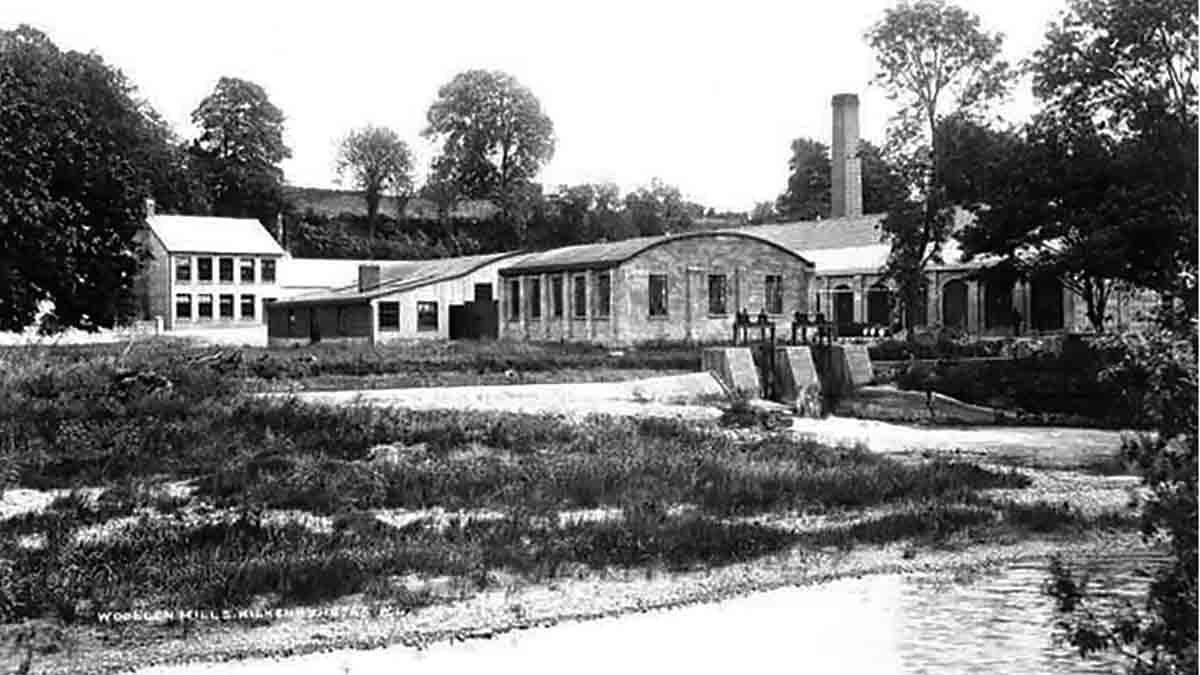 PART 2
PART 2
The picturesque village of Talbot’s Inch stands on the west bank of the River Nore in the northern suburbs of Kilkenny City. Contemporary accounts described Talbot’s Inch as a ‘garden village’ but it is more accurately described as a model village.
Robert Talbot is the most prominent and he is generally regarded as the builder of the Town Walls. But it is most likely he was responsible for the collection of the murage tolls as there is a reference to land outside the town wall in 1331. He may also have lent money to the town for wall building on security of the tolls. It is recorded that Robert Talbot a most worthy gentleman enclosed with walls the greater part of the town by which it is greatly fortified. He filled many offices as a citizen, Sovereign in 1374, 75, 80, and 84. Was placed first on the roll of the 12 chief burgesses for many years, and was Sheriff of Kilkenny seventimes.
In 1408 Thomas of Lancaster the Kings son summoned a Parliament to meet in Kilkenny and Robert Talbot paid 50s for a pipe of wine for the entertainment of Thomas. This meeting was probably about the repairing or rebuilding of the town walls. He died about 1415 and in 1417 his widow paid the Corporation 9d for a year’s rent for Kytelers Hall. He is also buried in St. Canices Cathedral. After the death of the three brothers there is no mention of any of this family of Talbot or indeed any Talbots for over two centuries.
In 1661 a Thomas Talbot was a vintner and tailor in Kilkenny, who issued penny tokens in the course of his trading but he is supposed to be a Cromwellian. The lands of Talbots Inch then came into the hands of the Cotteral family who had their main land near Kells a Talbot heiress evidently married a Cotteral.
A tomb in St Canices Cathedral dated 1550, records the names of Adam, and John Cotteral, Richard and Walter Lawless Lords of Talbots Inch. The Lawless and Cotteral families were of Norman origin. Their history in many ways is parallel to the Talbots. They were Sovereigns, and Sheriffs of the city, and the Lawless name is mentioned many times in the Liber Primus. One Walter Lawless in 1537 being indicted, and denounced before the Jury of Kilkenny as a grey merchant or forestaller. Another Walter descendant of the afore mentioned was stated to be “a man born to be lucky” He attracted the attention of James 1 and was granted seven manors in Waterford, Tipperary, and Kilkenny. He married a daughter of Robert Roth and one of his grandsons was also a Walter Lawless, he was a friend of James 11. He was with him at the Battle of the Boyne. James had Silver plate with him engraved with the Stuart coat of arms which he gave to William Lawless. This possession of the Silver may account for the legend that Gold and Silver was buried at Talbots Inch. This gold and silver story is very persistent along the Nore valley in the North of the county.
The Lawless lands were forfeited in 1703.Bishop John Hartstonge bought the estate of Talbots Inch, 174 acres for £455 in trust for his brother Sir Standish Hartstonge M.P. for Irishtown. These Hartstonges were a Norfolk family but John was educated at Johns College, he was chaplain to the Duke of Ormonde.
There is a gap in the grounds as to who were the owners between 1711 and 1890. A Mr. Murphy farmed the lands around this time to 1906 Mr. Morris was the occupant.
Lady Desart came to Talbots Inch in 1906 and soon after had the village built for the employees working at the Wood workers factory, the tobacco growing and the Woollen mills. She bought the lands of Talbots Inch from Col. Frederick McCastie in 1912.
Lady Desart called Talbot’s Inch, Aut Even from the Gaelic meaning a pleasant place. She died in 1933 and the lands and village were sold.






















